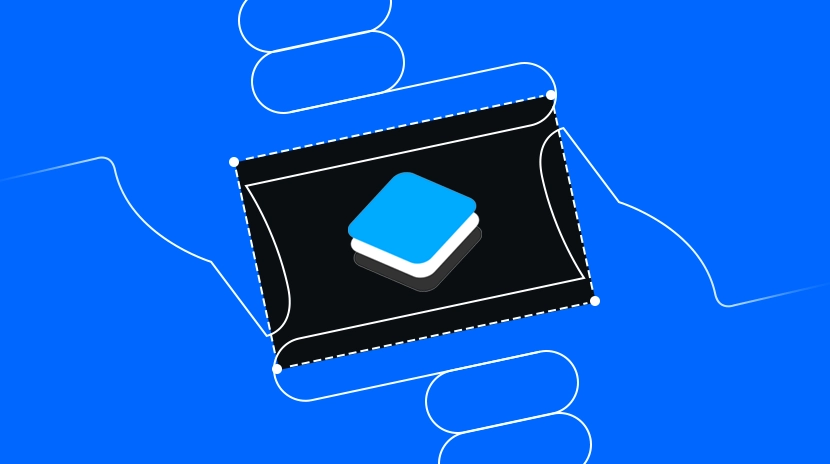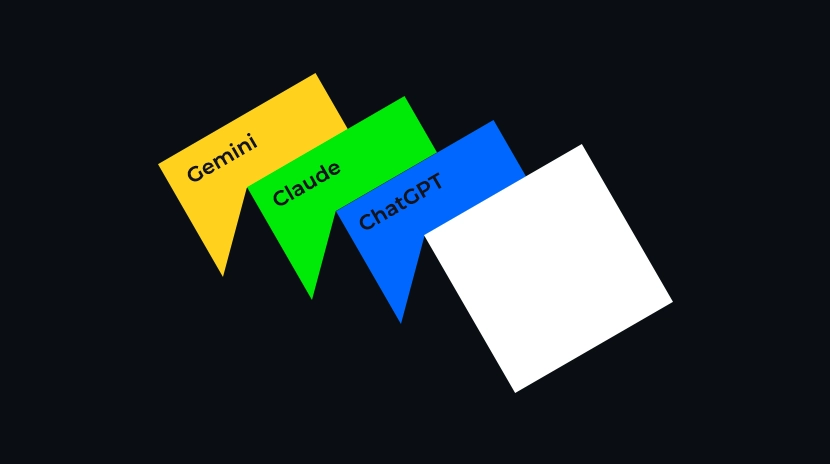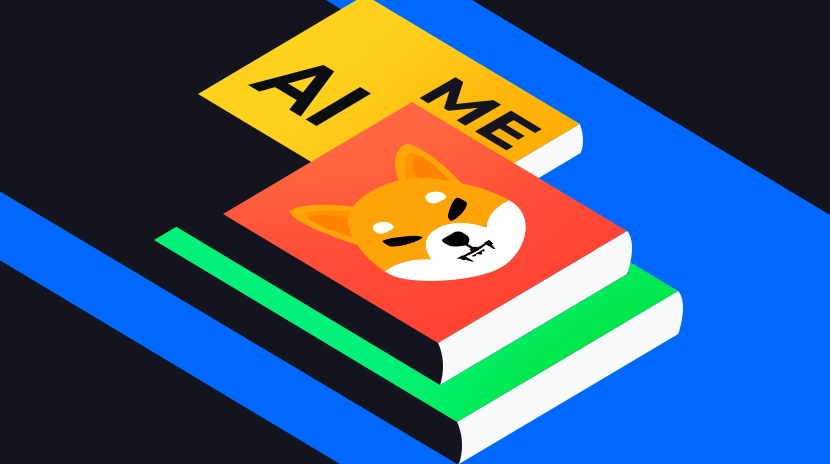6 Нових рішень з підтвердження штучного інтелекту у 2025 році
Переслати оригінальний заголовок 'AI and Verifiability'
По мірі того як системи штучного інтелекту все більше інтегруються з екосистемами блокчейну, забезпечення перевірки виведення штучного інтелекту стає кутовим каменем для сприяння довіри, прозорості та відповідальності. Це особливо важливо для децентралізованих фінансів (DeFi) та додатків доведення особи, де точність та надійність можуть безпосередньо впливати на фінансові результати, управлінські рішення та ідентифікацію користувача.
Доводи за підтвердження штучного інтелекту в децентралізованих системах
Спостережливість ШІ
Забезпечує, що процеси прийняття рішень є прозорими та зрозумілими. Учасники отримують уявлення про те, як приймаються висновки - важливо, коли рішення впливають на транзакції в ланцюгу або на великомасштабне управління.
Відстеження джерела
Відстежує дані, параметри та архітектури моделей, використовувані для генерації прогнозів штучного інтелекту. Завдяки встановленню походження користувачі знають, звідки походять навчальні дані та які моделі були використані, що підвищує довіру та зменшує ймовірність поширення недостовірної інформації.
Перевірка виведення
Підтверджує, що остаточні виходи штучного інтелекту є як точні, так і незмінні. У децентралізованому контексті це часто передбачає механізми підтвердження (наприклад, докази з нульовим знанням, консенсус вибірковості), щоб гарантувати, що обчислення або висновки не були підтручені поза ланцюжком.
Виклики в перевірці штучного інтелекту на ланцюжку
Хоча блокчейни відмінно справляються з наданням незмінних реєстрів та розподіленого довіри, обчислення ШІ на ланцюжку можуть бути надто дорогими. Наприклад, множення матриці на 1000×1000 цілих чисел може спожити мільярди газу - поза поточним газовим лімітом блоку Ethereum (Жень і ін., 2021). Внаслідок цього більшість проектів ШІ покладаються на позаланцюжкові обчислення з верифікацією на ланцюжку.
Проте підходи поза ланцюжком викликають нові виклики:
Потенційний шахрайство: Без надійної перевірки зловмисники можуть надсилати невірні або змінені дані.
Централізовані слабкі місця: Покладання на оффчейн оракули або приватні сервери може підривати децентралізовану етику, що призводить до цензури або одного пункту відмови.
Отже, нові рішення спрямовані на збереження високої продуктивності при використанні криптографічної або вибіркової перевірки, балансуючи ефективність та децентралізацію.
EigenLayer
EigenLayer - це протокол перерозподілу, який дозволяє валідаторам Ethereum «перерозподілити» свої ETH для забезпечення додаткових децентралізованих сервісів, відомих як активно валідовані сервіси (AVS). Замість потреби у новому наборі валідаторів для кожного спеціалізованого завдання (наприклад, перевірка штучного інтелекту, міжланцюжкові операції), EigenLayer використовує міцну і децентралізовану мережу валідаторів Ethereum.
EigenLayer підвищує безпеку, дозволяючи новим Активно валідованим сервісам (AVS) використовувати існуючий набір валідаторів Ethereum. Цей набір валідаторів вже великий, добре капіталізований та географічно розподілений, що забезпечує надійні криптоекономічні гарантії без необхідності стартапити нову мережу з нуля.
Активуючи повторне заробітання, EigenLayer значно зменшує оперативні витрати. Проекти вже не потрібно створювати й підтримувати власні екосистеми валідаторів, що знижує як інфраструктурні витрати, так і бар'єри для запуску нових децентралізованих сервісів на ланцюжку.
Крім того, система пропонує високу гнучкість. AVS може налаштовувати власну консенсусну та валідаційну логіку, при цьому успадковуючи базовий рівень безпеки Ethereum, що робить EigenLayer ідеальним фундаментом для модулярних, безпечних та масштабованих децентралізованих додатків.
Доказ вибіркового вибіркового доказу гіперболічних (PoSP)
Hyperbolic Labs представляє Proof of Sampling (PoSP), ефективну, масштабовану альтернативу традиційним zkML або оптимістичним доказам шахрайства для підтвердження AI. Цей новаторський протокол верифікації на основі вибірки забезпечує, що наші користувачі можуть довіряти результатам своїх моделей, які навчаються та працюють в нашій децентралізованій мережі GPU. Цей протокол, відомий як Proof of Sampling (PoSP), є новим золотим стандартом для верифікації в AI.
Розроблений командою Hyperbolic спільно з дослідниками з Університету Каліфорнії в Берклі та Колумбійського університету, PoSP використовує теорію ігор для забезпечення безпеки децентралізованих систем. Він перевіряє стратегічний вибір результатів та реалізує процес арбітражу для недобросовісних вузлів, щоб стимулювати 100% чесну поведінку в мережі.
Доказ прояви спонтанних доказів (PoSP) має кілька ключових переваг: він забезпечує ефективну перевірку, додаючи менше 1% обчислювальних накладних витрат, що дозволяє вузлам підтримувати майже нативні швидкості роботи. Його надійна безпека забезпечує чесність учасників, оскільки випадкові перевірки роблять шахрайство занадто ризикованим, щоб було варте зусиль. За допомогою інцентивів гейміфікації, PoSP створює чисту стратегію рівноваги Неша, де чесна поведінка завжди є раціональним вибором. Нарешті, PoSP має високий потенціал для штучного інтелекту, здатний підтримувати робочі навантаження великомасштабного децентралізованого штучного інтелекту, забезпечуючи тим самим перевірку та надійність високопродуктивних обчислень та процесів виведення.
Випадкові перевірки: Ротаційний набір валідаторів (через EigenLayer) регулярно вибирає та перевіряє обчислення штучного інтелекту. Ця постійна перевірка запобігає систематичному шахрайству.
Рівновага Неша: Злочинна поведінка є економічно ірраціональною для валідаторів - нечесні або непослідовні результати призводять до штрафів.
Висока Пропускна Здатність: менший наклад від дії PoSP робить його добре підходящим для випадків використання, що потребують швидких, частих інференцій ШІ.
На відміну від інших децентралізованих рішень у галузі штучного інтелекту, коли ви виконуєте інференцію в децентралізованій мережі Hyperbolic, ви можете бути впевнені, що отримуєте валідний результат.

Інтегруючи PoSP в EigenLayer, децентралізовані AI-сервіси можуть досягти безпечної, мінімізованої довіри фреймворк, який може обробляти зростаючу кількість запитів на виведення без жертвування децентралізацією або ефективністю вартості.
Випадкова перевірка: Валідатори вибираються випадковим чином для перевірки результатів, забезпечуючи неупереджені результати.
Масштабована підтримка AVS: PoSP зменшує обчислювальні вимоги, дозволяючи EigenLayer ефективно захищати обслуговування великого масштабу.
Запобігання шахрайству: Суворі покарання роблять недобросовісність невигідною, тоді як чесна поведінка залишається оптимальною стратегією.

«Протокол EigenLayer, поєднаний з нашим протоколом доказу вибіркового вибіркового доказу, фундаментально змінює спосіб, яким ми забезпечуємо децентралізовані сервіси. Тепер ми пропонуємо масштабовану, надійну та стійку до шахрайства інфраструктуру за частку від вартості.» - Джаспер Чжан, Генеральний директор Hyperbolic

Прочитайте повний документ про PoSP тут
Mira
Мережа Mira має на меті вирішити фундаментальну проблему в галузі штучного інтелекту, а саме тенденцію великих мовних моделей (LLM) генерувати невірну інформацію. Розроблена для зменшення галюцинацій та максимізації точності виведення без участі людини, Mira використовує децентралізовану мережу незалежних вузлів для довіри без перевірки виведення штучного інтелекту паралельно.
Існують три кроки в архітектурі Mira
Бінаризація
Процес розбиття виходів на простіші «твердження».
Розподілена перевірка
Вищевказані твердження перевіряються мережею вузлів-верифікаторів, які виконують спеціалізовані моделі для перевірки тверджень. Перевірка виконується у форматі питань з вибором одного відповіді. Твердження для перевірки випадковим чином розфрагментовуються між верифікаторами, що ускладнює змову.
Доказ-Перевірка
Гібридний механізм консенсусу, який поєднує доказ роботи (PoW) та доказ власності (PoS), використовується. Кожному перевіряючому потрібно зробити стейк для участі в перевірці. Цей підхід забезпечує, що перевіряючі фактично виконують інференцію, а не лише засвідчують. Стейк перевіряючого буде зменшено, якщо виявлено, що їх вивід постійно відхиляється від консенсусу.
Після досягнення консенсусу мережею щодо виводу генерується криптографічне свідоцтво та записується в блокчейн, створюючи незмінний запис перевірених фактів.

Джерело:Біла книга Mira Network
Приватність є ключовим аспектом дизайну Mira. Оскільки претензії розподілені випадковим чином, неможливо для одного вузла оператора відновити початковий вихідний код. Крім того, відповіді на перевірку від незалежних перевіряючих залишаються приватними до досягнення консенсусу, запобігаючи витоку інформації.
Міра намагається перевіряти все більш складний контент, який включає в себе код, структуровані дані та мультимедійний контент. У майбутньому Міра також буде відновлювати недійсний контент, коли виявлено недійсний контент, досягаючи як точності, так і швидкості в виведенні штучного інтелекту. Зрештою, мережа Mira зможе накопичувати економічно захищені факти, створюючи базу даних для перевірки фактів.
При зростанні обсягу мережі - вище покоління комісій - кращі нагороди за верифікацію - привертають більше операторів вузлів - покращена точність, вартість та затримка при верифікації відповідей
Атома
Атома - це децентралізована, приватна та перевірена мережа виконання ШІІ, яка діє на головній мережі Sui. Основна архітектура складається з трьох елементів: (a) обчислювальний шар; та (b) верифікаційний шар; та (c) приватний шар.
Шар обчислень
Глобальна мережа виконавчих вузлів, яка обробляє запити на виведення. Велика кількість вузлів доступна завдяки співпраці з різними центрами обробки даних та крайовими пристроями, такими як цифрові пристрої окремих осіб.
З Atoma ваги моделі доступні локально на вузлах, що збільшує швидкість виведення, коли отримано запит. Крім того, отримані запити маршрутизуються до найбільш підходящого вузла, відповідно відповідаючи завдання відповідною продуктивністю та вартістю.
Atoma фокусується на оптимізації ефективності виконання висновків за допомогою кількох функцій, включаючи FlashAttention та Paged Attention, які разом сприяють зменшенню обчислювальних витрат.
Шар верифікації
Цілісність обчислень перевіряється за допомогою узгодження вибіркових висновків. Це процес, в якому вузли вибираються випадковим чином для виконання висновків та генерації криптографічного хешу виводу. Якщо всі хеші, згенеровані обраним набором вузлів, співпадають, вивід висновку перевіряється. Якщо виникає розбіжність між згенерованими хешами, мережа знайде недобросовісний вузол, який буде позбавлений свого стейку через штраф.
Ймовірність того, що зловмисний атакувач зможе контролювати половину або більше всієї потужності мережі GPU для гри в систему, дуже низька, і стає ще складнішою по мірі масштабування мережі вузлів. Кількість вузлів, обраних для вибіркового вибору, є гнучкою; для завдань із великими ставками може бути обрано більший набір вузлів.
Приватний шар
Atoma наголошує на збереженні безпеки та приватності даних користувачів, виконуючи обчислення в Надійному середовищі виконання (TEE). Дані, введені користувачами, зашифровані та розшифровуються лише в TEE. Це запобігає перегляду даних користувача будь-яким іншим стороннім особам на блокчейні. Після виконання висновків результат зашифровується, перш ніж повертається користувачам.
Незважаючи на те, що вищезазначене є безпечним рішенням, варто зауважити, що воно супроводжується компромісом у вигляді вищого обчислювального навантаження, що може призвести до вищих комісій для користувачів.
Aizel Network
Подібно до Atoma Network вище, Aizel Network вибирає підхід на основі TEE. Відмінність полягає в тому, що Aizel інтегрувала обчислення багатоагентного участі (MPC) у свій робочий процес, де завдання перекладу маршрутизуються на різні TEE. Це спрямовано на децентралізацію мережі, забезпечуючи можливість виконання висновків навіть тоді, коли один TEE взламано або вийшов з ладу.
Сорок два
Fortytwo шампіони модель «струмінне висновку», побудована навколо Малих Спеціалізованих Моделей (SLMs). Замість того, щоб покладатися на один великий монолітний штучний інтелект, мережа оркеструє кілька моделей, запущених учасниками, кожна з яких налаштована для конкретних завдань або областей. Ці моделі працюють паралельно — перевіряють, вдосконалюються та перевіряють взаємно результати одне одного, щоб надавати більш точні та надійні висновки.
Ця децентралізована структура вирішує проблеми, з якими часто стикаються одиночні великі моделі, такі як затори під час навчання, високі вимоги до обладнання та одні точки відмови. Розподіляючи інтелект по численним меншим моделям та учасникам, Fortytwo забезпечує як масштабованість, так і стійкість до відмов.
1. Малі Спеціалізовані Моделі (SLMs)
Ініціалізація на основі наміру
Перед тим, як розпочнеться будь-яке завдання, учасники визначають мету, бюджет та обмеження. Цей підхід узгоджує кожен SLM зі загальною місією—чи то це узагальнення тексту, аналіз коду чи будь-яке інше спеціалізоване висновок.
Спеціалізації, визначені учасниками
Оператори окремих вузлів додають свої власні доточені моделі до мережі. Вони зберігають повний контроль над вагами, перекосами та власними даними, що гарантує конфіденційність для кожного власника моделі. Ці спеціалізовані моделі можуть фокусуватися на таких областях, як аналіз настроїв, розбір юридичного тексту або навіть генерація коду для конкретної галузі.
Конфіденційність ваги та відхилення
Критичним аспектом Fortytwo є те, що учасники не повинні ділитися внутрішніми модельними даними. Лише результати інференції діляться з мережею. Ця конструкція зберігає інтелектуальну власність кожного власника моделі та допомагає зменшити ризики, пов'язані з викриттям чутливих даних.
2. Swarm Виведення & Оцінка рівня
Багатофункціональне співробітництво SLM
Задачі розподіляються між 7–8 (або більше) спеціалізованими SLM, кожен з яких забезпечує унікальну доменну перспективу. Розділяючи великі завдання на менші підзадачі, мережа більш ефективно використовує переваги кожної моделі.
Flat Mixture-of-Experts (MoE)
Замість розміщення підекспертів на кількох рівнях, Fortytwo використовує "плоский" підхід MoE, де кожна модель обробляє дані незалежно. Цей дизайн може бути особливо ефективним, оскільки він уникне складності ієрархічного відкриття, дозволяючи експертам зосередитися виключно на своїх відповідних підзадачах.
Колективне виявлення помилок
Оцінка колег по роботі відіграє ключову роль у збереженні точності висновків. Коли моделі не збігаються, мережа позначає розбіжності для більш глибокого аналізу. Цей процес взаємоперевірки є важливим для вчасного виявлення помилок та забезпечення високоякісного результату.
3. Низька затримка та розподілене обчислення
Обладнання для споживачів
Fortytwo оптимізований для пристроїв, таких як Apple Silicon та RTX GPUs, знижуючи вартісні бар'єри та розширюючи базу потенційних операторів вузлів. Цей підхід демократизує штучний інтелект, дозволяючи більшій кількості осіб—а не лише великим центрам обробки даних—брати участь.
Кластери розгортання
Багато операторів вузлів вибирають хмарні платформи (наприклад, AWS) або власні кластери, щоб мінімізувати затримку. Добре координовані кластери стають особливо цінними в сценаріях з обмеженим часом, де навіть незначні затримки можуть значно впливати на досвід користувача.
4. Спільнота операторів вузлів
Зростаюча участь
Тисячі учасників висловили зацікавленість у запуску вузлів інференції, створюючи різноманітну та розподілену мережу. Це розширення призводить до підключення більшої кількості обчислювальних ресурсів в Інтернет, подальше збільшення пропускної спроможності та стійкості.
Внески у модель Вікіпедії
Подібно до того, як редактори Вікіпедії співпрацюють над статтями, кожен оператор вузла може покращити або вдосконалити спеціалізовані моделі та поділитися покращеними методиками інференції. Це колективне утримання та вдосконалення сприяє постійному інноваційному розвитку та підвищує загальний рівень інтелекту мережі.
Лагранж
Лагранж перебуває на передових позиціях у використанні технології нульового знання (ZK), щоб надати перевірку штучному інтелекту. Їх дивіз — "Майбутнє штучного інтелекту - це ZK, а майбутнє людства - Лагранж" — підкреслює переконання, що, по мірі того, як штучний інтелект розвиватиметься до суперінтелекту, ми повинні забезпечити прозорість та довіру у те, як працюють ці моделі.
DeepProve: Високопродуктивний zkML
- Доказ правильної моделі: DeepProve криптографічно підтверджує, що для заданого виведення була використана правильна модель штучного інтелекту, не залишаючи можливості для підміни або спотворення.
- Доказ вірного виводу: він також гарантує, що результат відповідає тому, що модель дійсно б виробляла, запобігаючи зловмисникам впроваджувати фальшиві результати.
- Покращення продуктивності: Має 158× швидше створення доказів та 671× швидшу перевірку, ніж багато існуючих рішень zkML, що робить можливим масштабне впровадження.
Вилучаючи "чорноящикові" взаємодії з штучним інтелектом, Лагранж забезпечує, що користувачам не потрібно сліпо довіряти штучному інтелекту. У децентралізованих середовищах, де мінімізація довіри є найважливішою, криптографічна впевненість у цілісності моделі та правильності виводу стає важливою.
Крім того, Inference Labs діє як спрямоване на додатки підрозділ Lagrange, який забезпечує зв'язок між дослідженням та практичними впровадженнями. Поки Lagrange концентрується на основах криптографії та проектування схем, Inference Labs гарантує, що ці досягнення готові до використання виробництвом.
Інтеграції в реальному світі
Вбудовує zkML у існуючі конвеєри машинного навчання, акцентуючи увагу на секторах, таких як DeFi, геймінг, охорона здоров'я та походження ланцюга постачання.
Партнери з провідними гравцями галузі для стрес-тестування нових функцій Лагранжа в реальних умовах (наприклад, велика кількість параметрів, строгі вимоги до часу відгуку).
EZKL
EZKL - це відкрита система для створення перевірних штучного інтелекту та аналітики за допомогою доказів нульового знання (ZKPs). Це дозволяє розробникам довести, що моделі штучного інтелекту були виконані правильно, не відкриваючи чутливих даних або деталей пропрієтарних моделей. Інспірований системами, подібними до Face ID від Apple, EZKL розширює непідкупну безпеку моделі на будь-яку модель на будь-якому пристрої - без спеціалізованого обладнання, такого як TEEs.
Інфраструктура доведення відсутності знань
EZKL автоматизує весь цикл життя ZKP - від компіляції моделі до генерації та перевірки доказів. Користувачі надають AI-моделі у форматі ONNX, які EZKL компілює в ZK-дружні схеми, використовуючи оптимізовану версію системи доведення Halo2. Після цього система генерує криптографічні докази правильного виконання моделі, які можна перевірити на будь-якому пристрої.
Цей криптографічний процес дозволяє децентралізовану довіру високоризиковим застосуванням штучного інтелекту, таким як фінансове прийняття рішень, біометрична аутентифікація та перевірка інференції в реальному часі.
Спільні SNARKs (Cosnarks)
Недавно EZKL представив спільну SNARKs (cosnarks), що дозволяють двом сторонам - таким як власник моделі та власник даних - спільно генерувати доказ ZK, не розкриваючи конфіденційних активів жодній зі сторін. На відміну від систем довірчих доказів MPC, cosnarks усувають додаткові припущення про довіру, обмежуючи обчислення лише учасниками.
Цей розвиток дозволяє використовувати такі сценарії, як приватне кредитне скоринг, конфіденційні торговельні стратегії та перевірка ідентичності з нульовим знанням. Реалізація використовує бібліотеку MPC Renegade, оптимізовану для 2PC, та інтегрується безпосередньо в Lilith, шар оркестрації хмари EZKL.
Підтримка моделі та гнучкість
EZKL підтримує широкий спектр архітектур штучного інтелекту / машинного навчання, включаючи CNN, RNN, трансформатори у стилі GPT, дерева рішень та стійкі моделі дифузії. Будь-яка модель, сумісна зі стандартом ONNX, може бути перетворена в коло ZK.
Абстрагуючи логіку моделі в математичні схеми, EZKL дозволяє зберігати конфіденційність при виведенні у різних галузях, таких як фінанси, охорона здоров'я та ідентифікація. Логіка на основі дерев, механізми уваги та операції з великими матрицями підтримуються всередині підтримуваної фреймворком Halo2.
Досвід розробника
EZKL надає пріоритет доступності та абстрагуванню складності. Розробникам не потрібні попередні знання криптографії, досвід проектування схем, або високий рівень навичок DevOps. Система пропонує зв'язки в CLI, Python, JavaScript та Rust, що робить його простим для вбудовування ZK робочих процесів в існуючі ML конвеєри.
Автоматичне створення обмежень, спрощені команди доказів та безшовна інтеграція з інструментами оркестрації дозволяють розробникам зосередитися виключно на логіці додатків.
Протокол ORA
ORA - це протокол оракула, який не залежить від ланцюга, який об'єднує штучний інтелект та блокчейн, дозволяючи розробникам будувати повністю недовірені, децентралізовані додатки, що працюють за допомогою перевірного машинного навчання. За допомогою своєї інфраструктури ORA приводить виконання штучного інтелекту, генерацію контенту та складні обчислення безпосередньо на ланцюжку, усуваючи залежність від позаланцюжкових API або централізованих обчислень. Його основна інновація полягає в поєднанні виконання штучного інтелекту з криптографічними доказами, створюючи програмовані конвеєри штучного інтелекту з вбудованою перевіркою.
Протокол дозволяє будь-якому розробнику створювати додатки, де виводи штучного інтелекту - чи то відповідь моделі мови, згенероване зображення або перевірене за фактами твердження - можуть бути вбудовані в смарт-контракти з гарантіями перевірки та правильності.
Onchain AI Oracle (OAO)
Onchain AI Oracle (OAO) - це флагманський продукт ORA. Він дозволяє смарт-контрактам запитувати, отримувати та діяти на основі результатів AI-висновків, виконаних офчейн, але перевірених і вирішених ончейн. Розробники можуть викликати роботу з AI-висновками через мережу opML ORA. Результат повертається через функцію зворотного виклику в контракті користувача, що робить ончейн-застосунки нативними для AI та повністю автономними.
OAO підтримує кілька великих моделей, таких як LLaMA3, Stable Diffusion, OpenLM Chat/Score, які працюють через перевірену інфраструктуру. Розробники можуть інтегрувати OAO на будь-який ланцюжок, сумісний з EVM, а попередньо побудовані розумні контракти, такі як Prompt та SimplePrompt, дозволяють швидке прототипування з урахуванням оптимізації газу.
opML та робочий процес верифікації
Оптимістична система машинного навчання ORA (opML) працює на його шарі перевірки. Коли запускається завдання виведення, результат публікується на ланцюжку з викликом. Протягом цього часу валідатори opML можуть перевірити результат і, якщо він невірний, подати доказ про шахрайство. Правильний результат замінює оскаржений. Це забезпечує, що виводи штучного інтелекту, вбудовані в смарт-контракти, можуть бути перевіреними, стійкими до цензури та економічно безпечними.
Цей оптимістичний підхід балансує продуктивність та децентралізацію. На відміну від zkML, який може потребувати значних витрат обчислювальних ресурсів на початковому етапі, opML робить економічно необґрунтованим успіх недобросовісної поведінки, особливо коли мережа валідаторів масштабується.
Інтеграція розробника
Розробники взаємодіють з OAO через добре задокументований, модульний інтерфейс. Щоб інтегрувати штучний інтелект у смарт-контракт, розробник успадковує AIOracleCallbackReceiver та реалізовує функцію aiOracleCallback() для отримання результатів. Потім вони можуть викликати оракул, щоб ініціювати інференцію, використовуючи ідентифікатори моделей, вхідні дані та адресу зворотного виклику.
На даний момент на Arbitrum розгорнуто чотири моделі, і інтеграцію можна зробити настільки просто, як використання шаблонів Prompt від ORA. Інфраструктура також підтримує більш складні випадки використання за допомогою оркестрування обчислень, що працює на основі Lilith, що дозволяє прискорення виведення і високопродуктивні робочі навантаження.
Initial Model Offering (IMO)
ORA створила рамки Ініціативної Модельної Пропозиції (IMO), щоб децентралізувати власність, дохід та управління моделями штучного інтелекту. IMO токенізує моделі штучного інтелекту через двокомпонентну структуру токенів:
- ERC-7007: Дозволяє прикріплювати перевірені виходи штучного інтелекту (наприклад, зображення, прогнози) безпосередньо на ланцюжок.
- ERC-7641: Розподіляє дохід від використання моделі серед власників токенів, створюючи інцентиви для спільноти, що управляє штучним інтелектом.
Забезпечуючи голосування на основі токенів та монетизацію, IMOs фінансують розвиток відкритих джерел, забезпечуючи тимчасову стійкість інфраструктури штучного інтелекту, глобальний доступ та колективну власність.
Висновок
Поскільки вертикаль штучного інтелекту продовжує зростати, необхідність у підтверджуваних виходах штучного інтелекту стає все більш критичною. Як видно з вищевказаного, існують різноманітні підходи до забезпечення недовіри в розподілених рішеннях штучного інтелекту, включаючи довірені середовища виконання (TEEs), докази вибіркового вибіркового вибіркового вибіркового вибіркового вибіркового вибіркового вибіркового вибіркового вибіркового вибіркового вибіркового вибіркового вибору (PoSP), машинне навчання з нульовими знаннями (ZKML) та оптимістичне машинне навчання (OPML).
Підходи відрізняються в різних аспектах, а саме вартістю, часом, необхідним для виконання, та рівнем гарантій безпеки. Ймовірно, що всі вищезазначені рішення будуть використовуватися яким-небудь чином, залежно від конкретних випадків використання.
Відмова від відповідальності:
- Ця стаття перепечатана з [GateГіперболічна - e/acc]. Передайте оригінальний заголовок «ШІ та перевірка». Усі авторські права належать оригінальному автору [Гіперболічний - e/acc]. Якщо є заперечення стосовно цього перевидання, будь ласка, зв'яжіться з Gate Навчаннякоманду, і вони швидко з цим впораються.
- Відповідальність за відмову: Погляди та думки, висловлені в цій статті, є виключно тими, що належать автору і не становлять жодної інвестиційної поради.
- Команда Gate Learn перекладає статті на інші мови. Копіювання, поширення або плагіат перекладених статей заборонені, якщо не зазначено інше.
Пов’язані статті

Що таке крипто-наративи? Топ-наративи на 2025 рік (оновлено)

Що таке OpenLayer? Все, що вам потрібно знати про OpenLayer

Sentient: поєднання найкращих моделей відкритого та закритого штучного інтелекту

Дослідження Smart Agent Hub: Sonic SVM та його масштабний фреймворк HyperGrid

Яка платформа будує найкращих AI-агентів? Ми тестуємо ChatGPT, Claude, Gemini та інші


